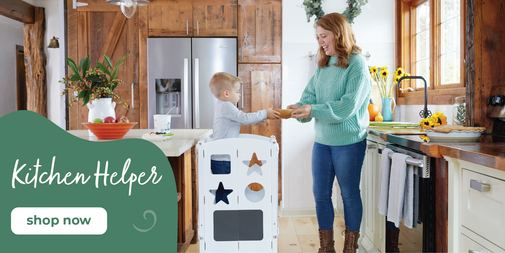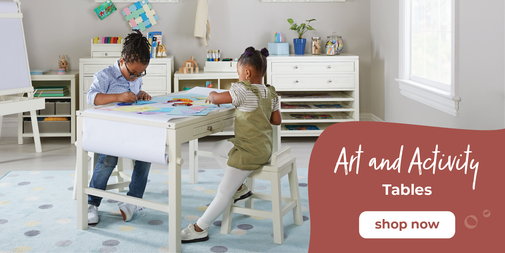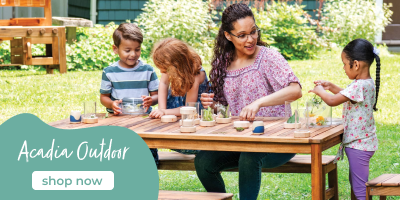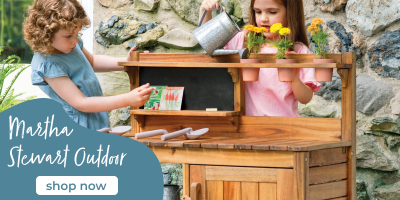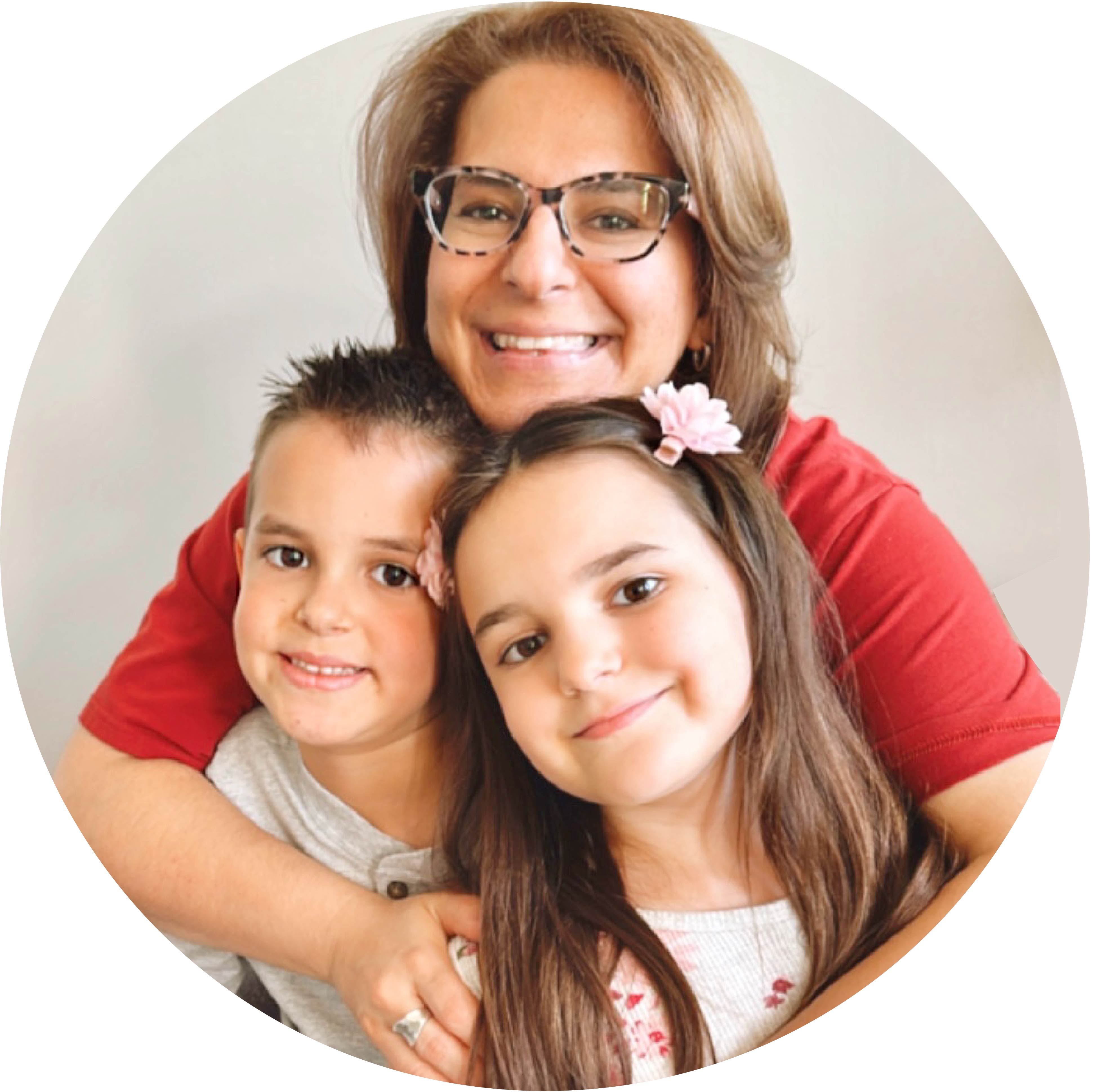How to Encourage Creative, Engaged and Independent Play
Through the setting and the materials provided, you can create a play experience that fosters independence and creativity.
Here are 4 tips for encouraging creative, engaged, independent play:
1. Create a dedicated playspace
Create a dedicated space with safe materials intended for your child's use. This can be a playroom or as simple as a play shelf or table in a nook.
Make the playspace near the main hub of your home to make it easy to tend to daily tasks, while children feel safe and comfortable to play nearby.
For us, having the playroom on the main floor has not only encouraged hours of play for the kids, but allowed us to make dinner, wash dishes, do laundry, work, and socialize with company, all while the kids play within sight, taking comfort in feeling our presence or joining in on our tasks as they'd like.
2. Choose Passive Toys Over Active Toys
Active toys do the work for children, resulting in them passively watching a battery operated toy go by. Passive toys are toys that allow children to be active; kids are the ones moving and doing the work to make play happen.
An example of a great passive toy is unit blocks. Children can arrange and stack them, deciding what the outcome will be. Children are the active ones since the toy itself is passive. Here, my son used unit blocks and a wooden ball to create his own miniature golf course.

3. Open-Ended Toys vs Closed-Ended Toys
Open-ended toys have no intended or set purpose, but leave it to the child to decide what they will do with it. Closed-ended toys have a set or defined purpose. In our home, we use mostly open-ended toys paired with some closed-ended toys. Favorite open-ended toys have been unit blocks, building toys, magnetic tiles like PowerClix, loose parts and playsilks like the ones from Sarah's Silks. Favorite closed-ended toys have been stuffed animals, figurines and vehicles.
With blocks and magnetic tiles, the kids can create tables, homes, play kitchens, boats and anything else that their imaginations come up with. Playsilks become costumes, doll hammocks, tablecloths, sails, parachutes and more. Stuffed animals and figurines become a part of the storyline, going on adventures and bringing the the kids' creations to life.
Here, the kids used their Notch Blocks combined with playsilks, to create a fort.
Tabletop Notch Blocks were combined with unit blocks and tea lights to create a stovetop. The kids added their nature finds (pine cones and acorns) as ingredients for a soup.
The kids used their unit blocks, Rainbow Blocks and Big Branch Block Builders to build a horse stable and trough. They used loose parts to fill the trough with "food".
They used unit blocks, Rainbow Blocks and playsilks to build a bed with bedding, night stands with lamps and high chairs for their dolls.
Rather than have a playhouse, doll bedding, chairs and accessories in the playroom, the organized and accessible blocks and the open floor space are a blank canvas, inviting and engaging the kids to make just about anything that they can think of.
4. Present Materials in an Inviting, Beautiful Way
Our space is divided into clear zones of play: building, sensory play, dramatic play, reading or resting and art. There is overlap of play between and within the zones but having the different areas lets the kids know where they can find associated materials.
We make sure to set out materials within sight and reach to invite children to engage with the items and easily access and return things. Blocks are organized by shape and size, and figurines are visible and lined up on a clear shelf. Sensory play items are next to the sensory table, allowing for the kids to independently create their own play.
